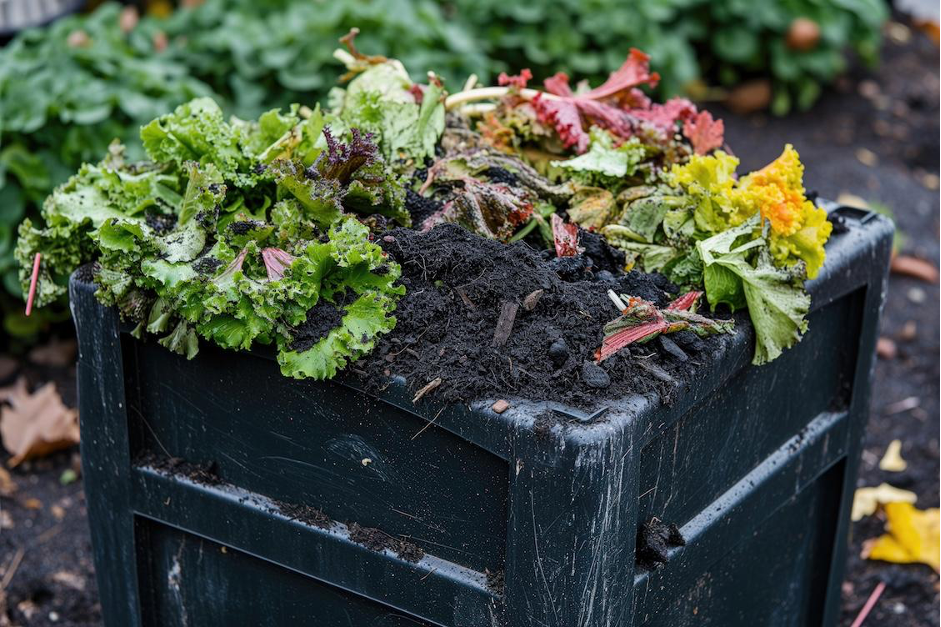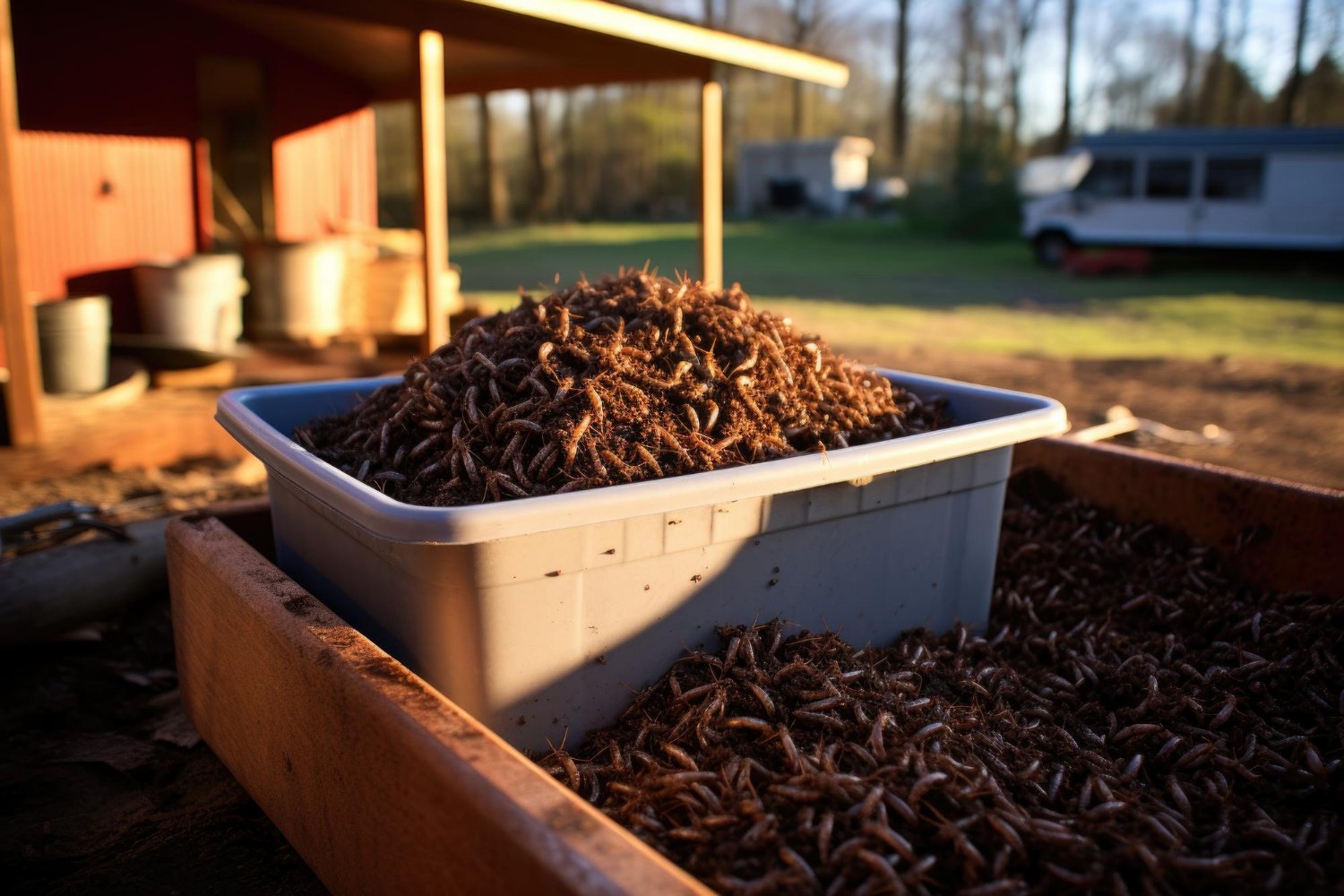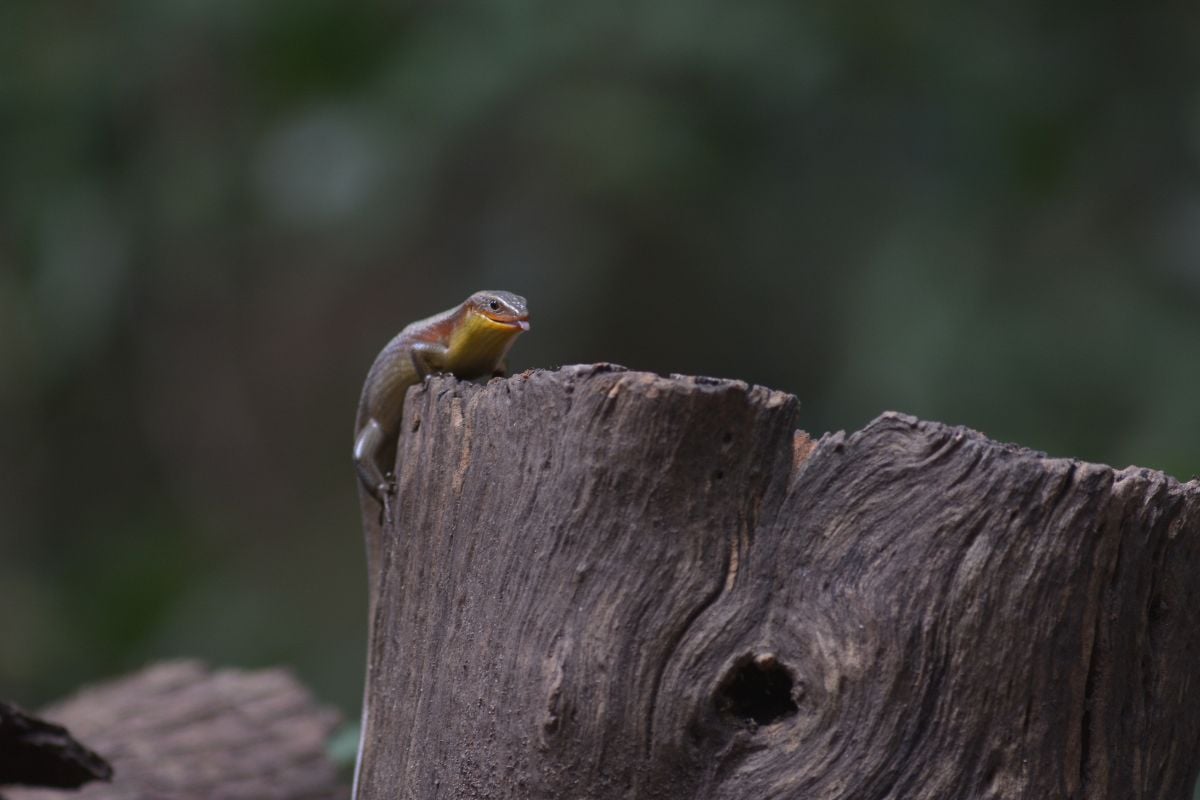 Ever noticed a band around some of your composting worms? This band shows that the worm is mature enough to reproduce. How do composting worms make babies? How long does it to make worm babies? And how can you encourage the worms to breed?
Ever noticed a band around some of your composting worms? This band shows that the worm is mature enough to reproduce. How do composting worms make babies? How long does it to make worm babies? And how can you encourage the worms to breed?
The red worm, Eisenia fetida, is a champion composting worm. Nestled in the confines of a composting bin, red worms happily eat your kitchen scraps. In return for these tasty morsels, they excrete valuable compost. The resulting “black gold” is the best compost for your garden and indoor plants.
It Takes Two Red Worms to Tango
On the one hand, red worms have both male and female characteristics. Botanists call them “hermaphrodites”. On the other hand, they need a partner to make babies. They cannot reproduce all on their own. Having DNA from two parents helps keep the offspring strong.
When the conditions are right, two red worms line up against each other, facing opposite directions. Their bands, called clitellum, secrete a mucus film that envelops both worms. Each worm receives sperm, which they store for later.
After several hours, the worms go their separate ways.
The clitellum then secretes albumin, a chemical that makes the clitellum start to harden. The worm starts to wriggle out of the clitellum. On the way, the worm deposits its own eggs and its partner’s sperm in the clitellum. The resulting lemon-shaped sac is called a cocoon. Sperm from one mating session can fertilize several cocoons.
Waiting for the Eggs to Hatch
Cocoons have a hard shell that protects the eggs and developing worm babies. About the size of a grain of rice, the cocoons start out a luminescent white color. As they mature, they gradually darken, turning yellow and then brown. When they become a reddish color, they are ready to hatch.
The cocoon can bide its time until conditions are right for hatching. Under ideal conditions, the worms will hatch in about three weeks. The eggs remain viable for up to one year. They can survive the cold winter and wait to hatch in the spring. Cocoons are most likely to hatch in warmer weather.
A cocoon starts with up to 10 eggs, but only 2 to 6 worms will eventually emerge. Hatchlings are tiny, less than an inch long. They soon grow into full-sized worms, depending on environmental conditions. For example, sufficient food, comfortable temperatures, and proper moisture levels help the little ones grow faster. In approximately 2 to 3 months, the worm babies should be mature enough to start reproducing.
How You Can Help
Worms will initiate mating without your direct help. However, you can set the stage by making the worm bin comfy. Starting with the bin, choose a tray-based composting bin, make a composting bin, or buy one at a store. A good bin has drainage, air holes, and a lid. Trays will make care and harvesting easier.
Prepare the bedding, then add Red Composting Worm Mix from Uncle Jim’s Worm Farm. We offer complete instructions on setting up your bin for maximum worm comfort.
Feed organic kitchen and garden scraps to the worms. Make sure you feed them only foods that are good for them — see our list of best worm foods. Avoid over-feeding the worms, or your bin might develop problems. See our Worm Bin Troubleshooting Guide if something does not smell right!
Under the pleasant conditions you create, the worms will settle in and make new worm babies. The worm population replenishes itself in a well-managed worm bin.
Need composting worms or supplies? Check out our online store.









17 thoughts on “Where Do Composting Worm Babies Come From?”
Do you deliver in Canada
Please let me know.
Thank you.
Alvin.
I have been following uncle Jim’s worm farm, and learning from it ,I’m about to retired in the next couple of years and I would like to have a hobby, since I do lots of fishing and gardening the worms would come in handy, please let me know if you deliver in Canada,
Thank you
Do you order to New York I love worms
When can i eat my worms?
How do you get your worm to have babies without another male worm
Hi.
I’m using my normal black trash bin as my worm bin. Is there a problem with that?
Do I have to punch holes for air on them, but other insects will go in, eg ants, etc…
I have bees. Can bees waxy comb be beneficial to the worms and their compost?
Jim,
I live in New Mexico. Very sandy here. Garden areia has some compost mixed with sand, what is the chance of worms surviving in this medium? I also have several 19 gal. Containers of composted vegetable matter. Add to it daily, would reds compost this even more?
Beeswax will not break down, so that won’t be good for the worms. Also honey will stick on them
Do compost worms eat the seedling roots and root vegetables?
you don’t need to buy worms to have alot of them. just use a flashlight at night and go pick up a few a few will turn into a million in no time. just a few pieces of food and your coffee grounds in the morning and a little water to keep the soil moist not wet and like magic alot of worms in no time.
I have a bin with a lot of worms. On the top layer, a lot of worm poop. In that poop, there are a lot of little bugs. What is this? What should I do?
Thank You so much for this information Jim! I live in Australia so I can’t order worms from you but your information is great. Thank you for helping me start my worm farm.
I have only had to order worms from you once and had great success, but I moved to Florida and things are different down here. I donated my bins before coming down. Can I restart down here with this hot weather?
How to eat worm?
Ketchum and mustard on a whole wheat bun.